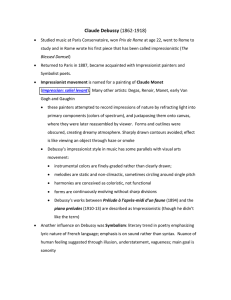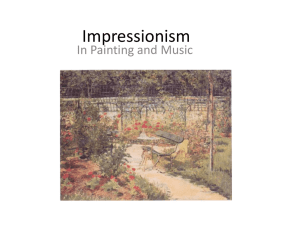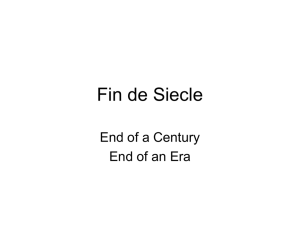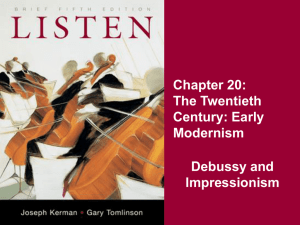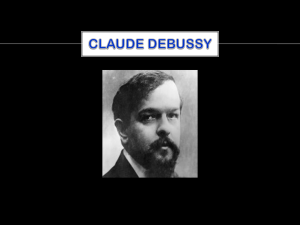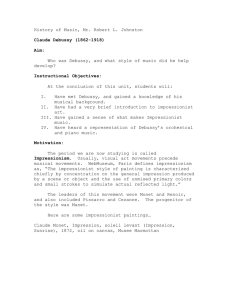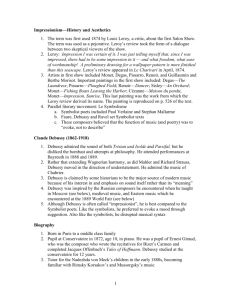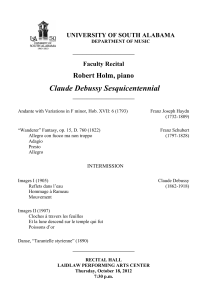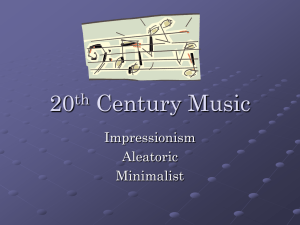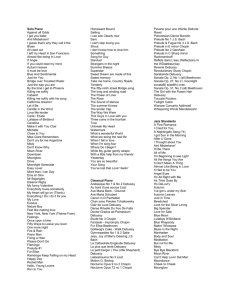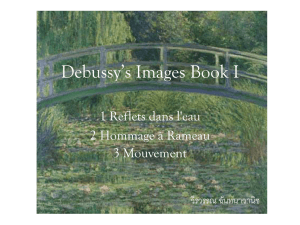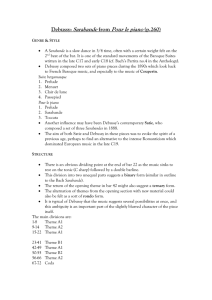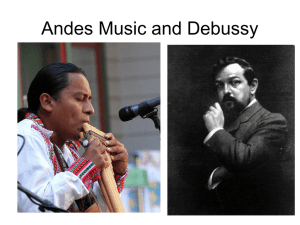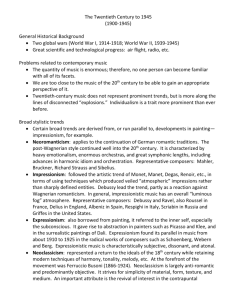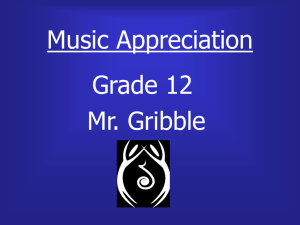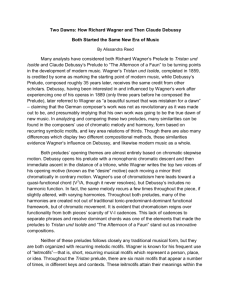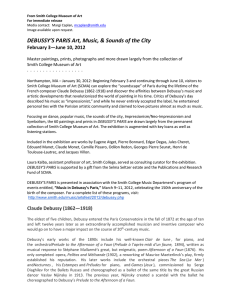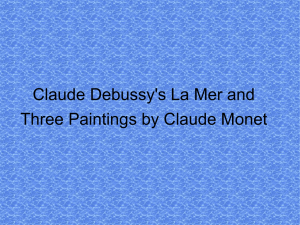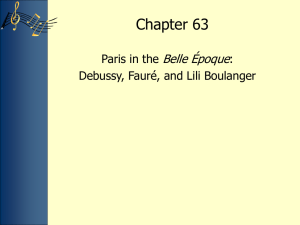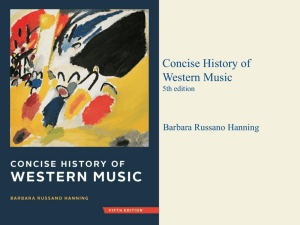Claude Achille Debussy
advertisement
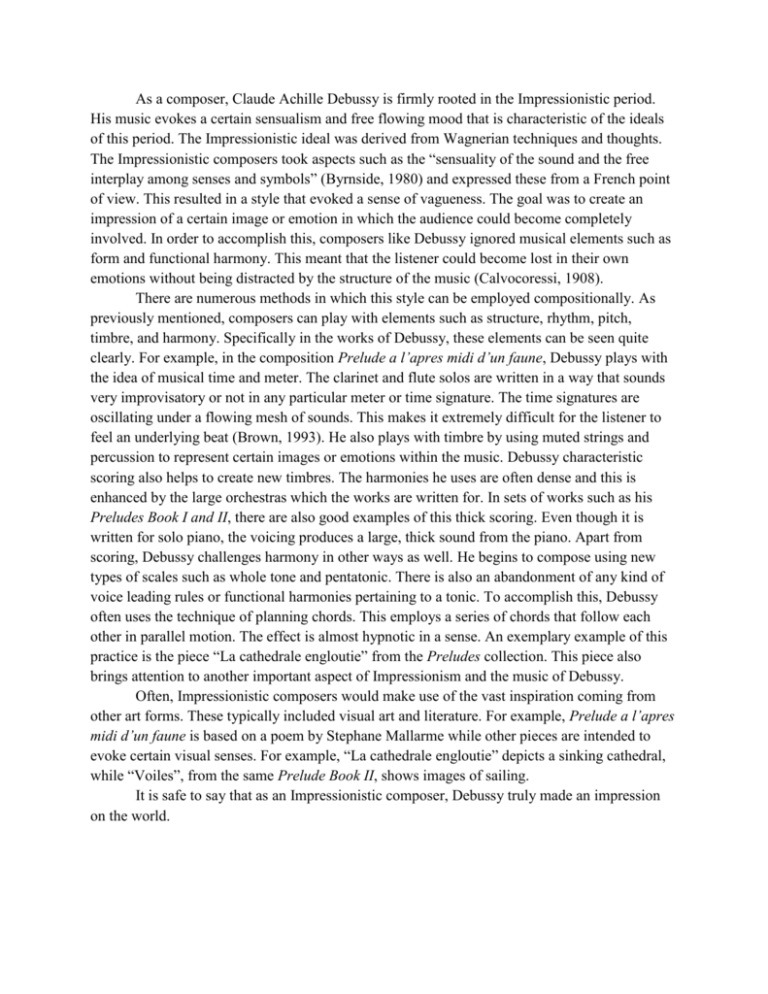
As a composer, Claude Achille Debussy is firmly rooted in the Impressionistic period. His music evokes a certain sensualism and free flowing mood that is characteristic of the ideals of this period. The Impressionistic ideal was derived from Wagnerian techniques and thoughts. The Impressionistic composers took aspects such as the “sensuality of the sound and the free interplay among senses and symbols” (Byrnside, 1980) and expressed these from a French point of view. This resulted in a style that evoked a sense of vagueness. The goal was to create an impression of a certain image or emotion in which the audience could become completely involved. In order to accomplish this, composers like Debussy ignored musical elements such as form and functional harmony. This meant that the listener could become lost in their own emotions without being distracted by the structure of the music (Calvocoressi, 1908). There are numerous methods in which this style can be employed compositionally. As previously mentioned, composers can play with elements such as structure, rhythm, pitch, timbre, and harmony. Specifically in the works of Debussy, these elements can be seen quite clearly. For example, in the composition Prelude a l’apres midi d’un faune, Debussy plays with the idea of musical time and meter. The clarinet and flute solos are written in a way that sounds very improvisatory or not in any particular meter or time signature. The time signatures are oscillating under a flowing mesh of sounds. This makes it extremely difficult for the listener to feel an underlying beat (Brown, 1993). He also plays with timbre by using muted strings and percussion to represent certain images or emotions within the music. Debussy characteristic scoring also helps to create new timbres. The harmonies he uses are often dense and this is enhanced by the large orchestras which the works are written for. In sets of works such as his Preludes Book I and II, there are also good examples of this thick scoring. Even though it is written for solo piano, the voicing produces a large, thick sound from the piano. Apart from scoring, Debussy challenges harmony in other ways as well. He begins to compose using new types of scales such as whole tone and pentatonic. There is also an abandonment of any kind of voice leading rules or functional harmonies pertaining to a tonic. To accomplish this, Debussy often uses the technique of planning chords. This employs a series of chords that follow each other in parallel motion. The effect is almost hypnotic in a sense. An exemplary example of this practice is the piece “La cathedrale engloutie” from the Preludes collection. This piece also brings attention to another important aspect of Impressionism and the music of Debussy. Often, Impressionistic composers would make use of the vast inspiration coming from other art forms. These typically included visual art and literature. For example, Prelude a l’apres midi d’un faune is based on a poem by Stephane Mallarme while other pieces are intended to evoke certain visual senses. For example, “La cathedrale engloutie” depicts a sinking cathedral, while “Voiles”, from the same Prelude Book II, shows images of sailing. It is safe to say that as an Impressionistic composer, Debussy truly made an impression on the world.

